{{!completeInfo?'请完善个人信息':''}}
精准高效领先的融资对接服务


In April of this year, Mu Tong Technology unveiled a new Team RPG game called "Watcher of Realms."

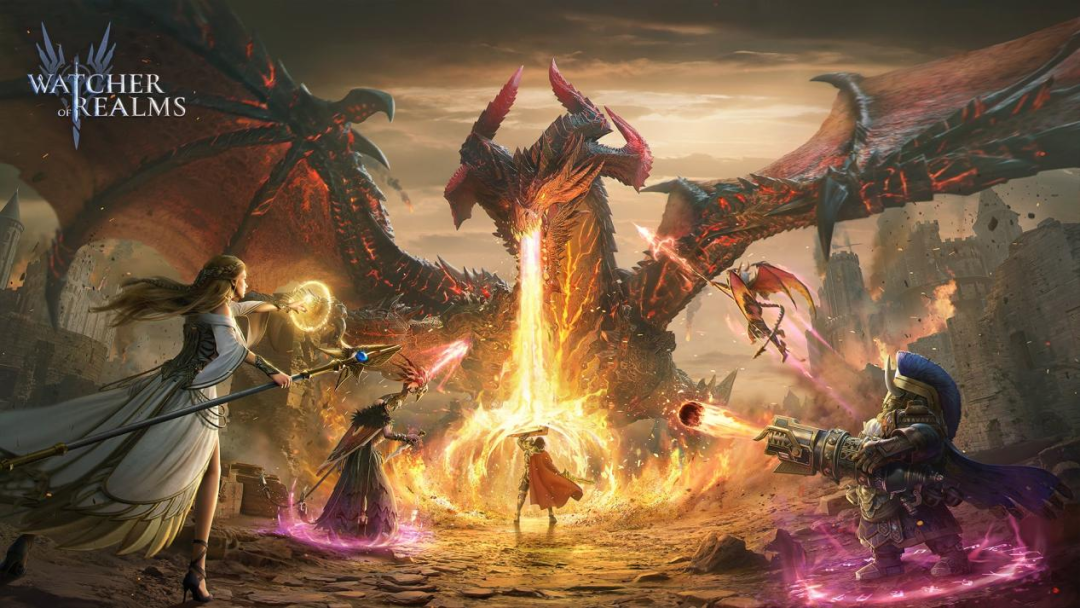
In April of this year, Mu Tong Technology unveiled a new Team RPG game called "Watcher of Realms." It was reported that after opening pre-registration in Europe, America, and Southeast Asia, the number of pre-registrations approached 1.5 million. On July 12th, "Watcher of Realms" officially entered open beta testing, and by August, the game had accumulated a total monthly revenue exceeding 78 million Chinese yuan (approximately 10.76 million US dollars).
These achievements are undoubtedly remarkable for Mu Tong, but what's even more noteworthy is that the Team RPG sub-genre, which is a longstanding RPG niche, is gradually becoming more competitive.
Team RPG has become one of the most lucrative genres
Team RPG, also known as Squad RPG, is defined as "team-based RPG" on various analysis platforms. In terms of gameplay, Team RPG is essentially a turn-based card RPG, but unlike traditional turn-based games that offer a single-player experience, Team RPG tends to focus on team-based combat, emphasizing strategy. Many of these games also incorporate MMO-style open-world exploration.
For example, one of the most representative Team RPG products is "RAID: Shadow Legends" by the Israeli game company Plarium. This game features a strong Western fantasy theme, realistic art style, and a storyline that appeals to Western fantasy enthusiasts. It offers a wide range of gameplay modes, including dungeons, arenas, and guilds, which align with the preferences of Western players. "RAID: Shadow Legends" has achieved legendary success, with monthly revenue exceeding $200 million USD at its peak. Even after three years since its launch, it continues to generate monthly revenue exceeding $100 million USD. This consistent performance has propelled Team RPG into a major trend in the Western gaming market.

Team RPG has also provided a good opportunity for Chinese companies to enter the European and American markets. Roughly speaking, companies like DianDian Interactive, Lilith Games, Chaotic Era, Hero Games, 37 Interactive Entertainment, and Youai Interactive have all invested in the Team RPG genre. Some of these companies have achieved notable success with their already launched products.
For instance, DianDian Interactive's "Awaken: Chaos Era," "War of Deities: Darkness Rises," and "Among Gods," all of which feature a semi-realistic Western cartoon style with fantasy and magic themes, have been launched overseas. "Awaken: Chaos Era," known for its hero collection and adventure gameplay, incorporates a typical JRPG attribute restraint system in its combat system and has achieved monthly revenue of nearly 30 million USD.

Following their significant success with "Sword and Expedition," Lilith Games has released another hit, a myth-themed mobile game with a Western cartoon style called "Gods' Party." This game has achieved great popularity across various gaming markets, including Europe, America, Japan, and Korea.

"Dragonheir: Silent Gods" by Yoozoo Games, under the brand Chaoxi Guangnian, also adopts a realistic art style. Building upon the foundation of Team RPG, it incorporates elements commonly found in SLG (Strategy, Light, and Grid) games, such as sandbox maps. The game integrates chessboard elements into battles and introduces features reminiscent of tabletop role-playing games, including dice rolling and attribute adjustments. This results in a more immersive and complex gaming experience.

In addition, other games like "Code: Dragon" by Have Fun and "Project W" by Hero Game, along with the previously launched "Eternal Evolution" which had a noteworthy performance for some time last year, and 37 Interactive's testing phase games like "Lost Galaxy: Guardian" and "Chrono Legacy," all contribute to the fierce competition in the Team RPG space. These games, whether already launched or in testing, are rich in content and boast increasingly refined artistic dimensions. Therefore, a heated battle in the Team RPG genre is inevitable.
Looking at the timing of entry, Mu Tong Technology entered the Team RPG space at a point when competition in this genre was heating up. However, in terms of Team RPG's global development, Mu Tong's entry timing seems quite appropriate.
According to Sensor Tower's "2023 Global Mobile Games Market Outlook," aside from countries like South Korea and China with traditional MMORPG preferences, in the United States and Japan, Team RPGs (Squad RPGs) stand out in terms of in-app purchase revenue within the global RPG mobile game segment. Particularly in the United States, Team RPGs' in-app purchase revenue accounts for 45% of the total revenue.
Considering the trends in major T1 markets, Mu Tong Technology's "Watcher of Realms" holds significant research value.
Tower Defense + Card Gameplay: A New Approach to Team RPG
Now, let's take a closer look at "Watcher of Realms," a game that has gained significant attention. "Watcher of Realms" embraces a pure Western fantasy theme with a realistic art style and next-generation graphics, making it a near-perfect fit for the preferences of mainstream Team RPG players in Europe and North America. It can be considered a prime example of a product targeting the Western market.

Entering the game, "Watcher of Realms" boasts exquisite artistry within. The main interface of the game combines elements like the sea, rocks, campfires, tents, and merchants, creating a rich and immersive fantasy atmosphere. Gathered around the campfire, characters acquired through card draws or quests sit on the ground, engage in conversations, and share stories by the fire. The meticulous attention to detail enhances the game's overall immersion. Additionally, thanks to the game's hyper-realistic style, it exudes a particularly strong dark and mysterious ambiance, adding to its allure.
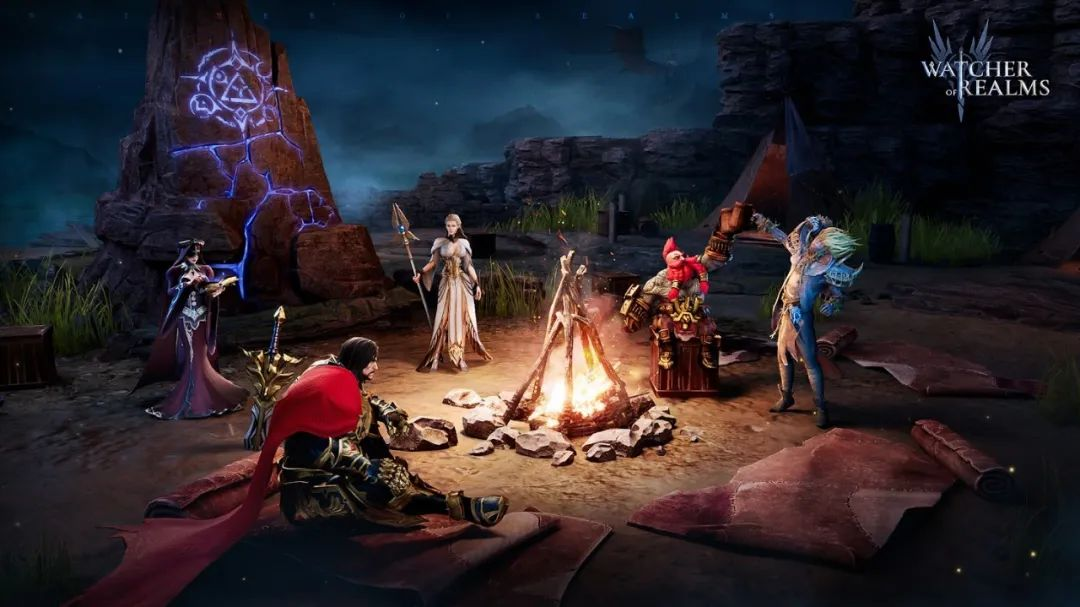
In terms of game design, "Watcher of Realms" boasts over 100 heroes from more than 30 races and eight major factions, covering various roles such as assassins, warriors, mages, and healers. These heroes form a powerful team to combat monster attacks. While I haven't experienced all the characters yet, from the few I've unlocked, "Watcher of Realms" has put considerable effort into living up to the "next-gen" keyword. The game features pure 3D modeling, lavish skill effects, advanced hero animations, and finely detailed character models that can be rotated and zoomed in 360 degrees for close examination. The game emphasizes the use of top-notch motion and facial capture technology. The top-down perspective in combat scenes also allows players to observe every frame of character and monster effects more clearly. Additionally, the smooth gameplay and responsive controls contribute significantly to the overall experience.

Similarly, thanks to its next-gen visual presentation, "Watcher of Realms" features multiple battle maps like deserts, dungeons, mountains, and ancient ruins, all of which are visually captivating.
In terms of gameplay, "Watcher of Realms" combines tower defense mechanics reminiscent of games like "Arknights" within the framework of a traditional card-based RPG. It introduces a unique "block" concept inspired by "Arknights," allowing players to place characters on the battlefield to block enemy paths, greatly enriching the strategic depth of the game. Specifically, "Watcher of Realms" allows players to build two teams of five heroes each, with a maximum of five (team) +1 (support) hero cards in battle. Each hero placed on the field consumes points, which gradually regenerate over time. If a player wants to change the position of a hero, they can temporarily withdraw the card through the "retreat" feature, and after a certain amount of time (60s), they can reposition the hero on the battlefield.

During the hero deployment phase, players need to set the direction of hero attacks based on the hero's attack range, which significantly influences their subsequent strategic arrangements.
It's worth mentioning that in "Watcher of Realms," the deployment phase and battle occur simultaneously. The game provides only 1x and 2x speed options, with no "skip" option available. Therefore, players must quickly assess the situation, make timely decisions regarding hero placement or repositioning, and manually activate hero skills once their skill bars are full to maximize their effectiveness. If you've played "Arknights" before, you may find this phase more familiar and intuitive.
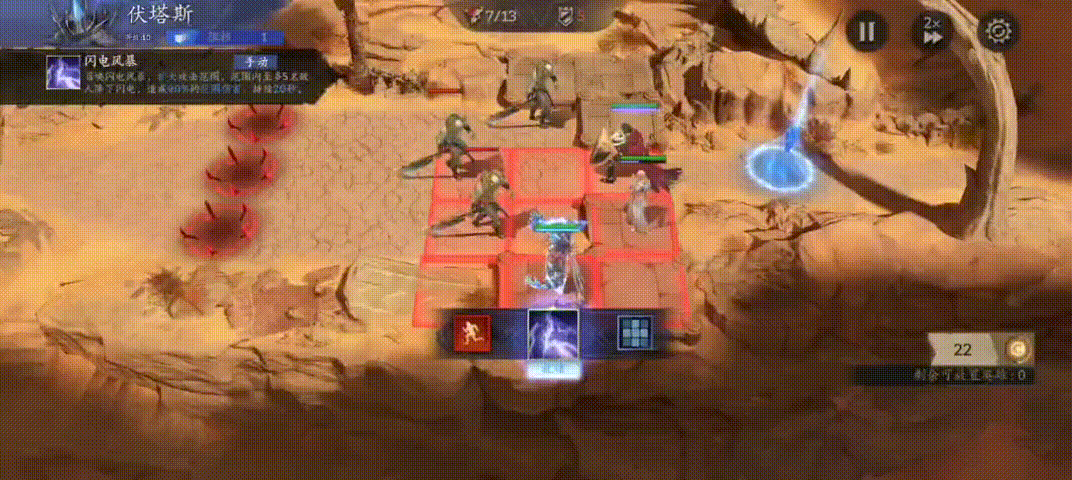
As a Team RPG game, "Watcher of Realms" naturally features a card development system. In the game, each character has multiple development paths, including advancement, equipment, awakening, skills, and artifacts. These development modes are relatively easy to understand and follow the framework of card games. For example, characters can be advanced and upgraded to higher stars, which increases their basic attributes like attack and health and unlocks new awakened skills when they reach a certain level. Awakening involves using duplicate cards of the same character to enhance their attributes.
From a product perspective, "Watcher of Realms" distinguishes itself from competitors in two main ways:
Next-gen artistic presentation and smooth gameplay mechanics.
Real-time tower defense gameplay with dynamic battles.
In battles, players must not only adapt their strategies based on hero roles (such as assassins, mages, healers) and attack ranges but also consider terrain, timing skill activations, and adjust hero positions promptly. The multi-dimensional strategic gameplay in "Watcher of Realms" provides greater replayability compared to other similar Team RPG products. This gameplay design has already been validated through the long-term market performance of titles like "RAID: Shadow Legends" and "Arknights."
Beyond the inherent product highlights, MuTong's user acquisition and promotion strategy for "Watcher of Realms" have also been effective in driving its success.
The game initially focused on the European and American markets while testing the waters in Southeast Asia. This strategy allowed the game to gain traction and succeed in various regions.
Since its pre-registration phase started in April, "Watcher of Realms" employed a multi-dimensional approach to user acquisition. In particular, it released an official trailer on YouTube. In this 32-second video, the game showcased some of its hero characters and monsters with next-gen graphics quality, giving players a glimpse of the game's core world view. The dark and immersive trailer garnered nearly 50,000 views in just seven days, and as of now, it has accumulated nearly 1.5 million views.
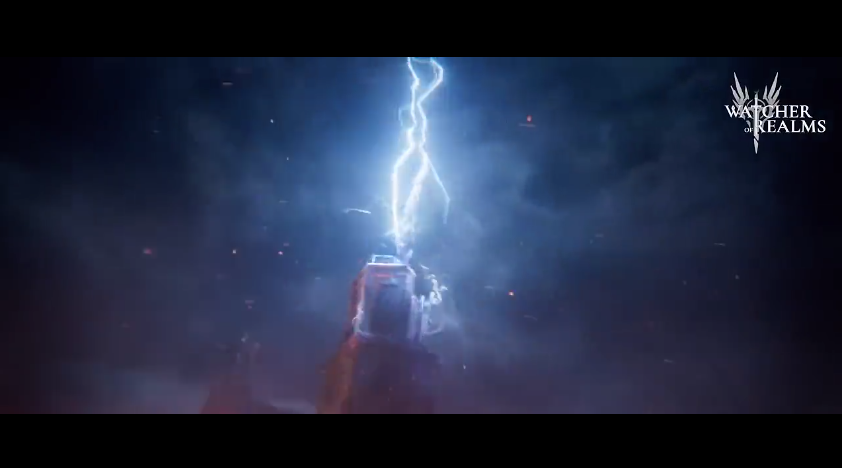
In early May, "Watcher of Realms" began small-scale advertising campaigns, with the top three target regions being Canada, the United Kingdom, and the United States. This indicates that the game's promotional efforts were primarily focused on the Western markets. In terms of ad creatives, the game used story-driven trailers and character showcases for pre-release hype. In July, the advertising efforts intensified, with daily ad placements exceeding 300. On July 26th, ad placements reached their peak with a total of 1654 ads placed across various channels.
The primary advertising channels used include Google Ads, Facebook, and the Audience Network. While video materials dominated (making up 60.15% of placements), image materials also had a significant presence at 36.96%. Based on the content posted on the "Watcher of Realms" official Facebook account, it appears that the game frequently shared hero character strategies and information about new hero releases, likely due to the game's extensive hero roster.
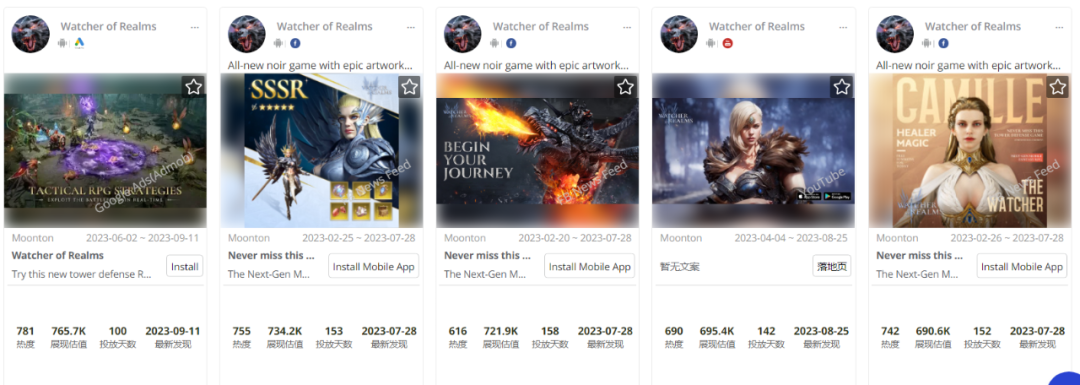
However, despite its significant presence on Google Ads (AdMob), "Watcher of Realms" performed best on YouTube in terms of estimated impressions. As of now, the estimated impressions for its materials on YouTube have reached 17 million.

In terms of its advertising strategy, "Watcher of Realms" approached it from two main angles. On one hand, it highlighted its cutting-edge art and technology, using stunning special effects to captivate users. On the other hand, it featured real-life streamers providing commentary and showcasing the game's core mechanics, such as card drawing and tower defense gameplay. This approach aimed to emphasize the game's excitement and create a closer connection between the game and the players.
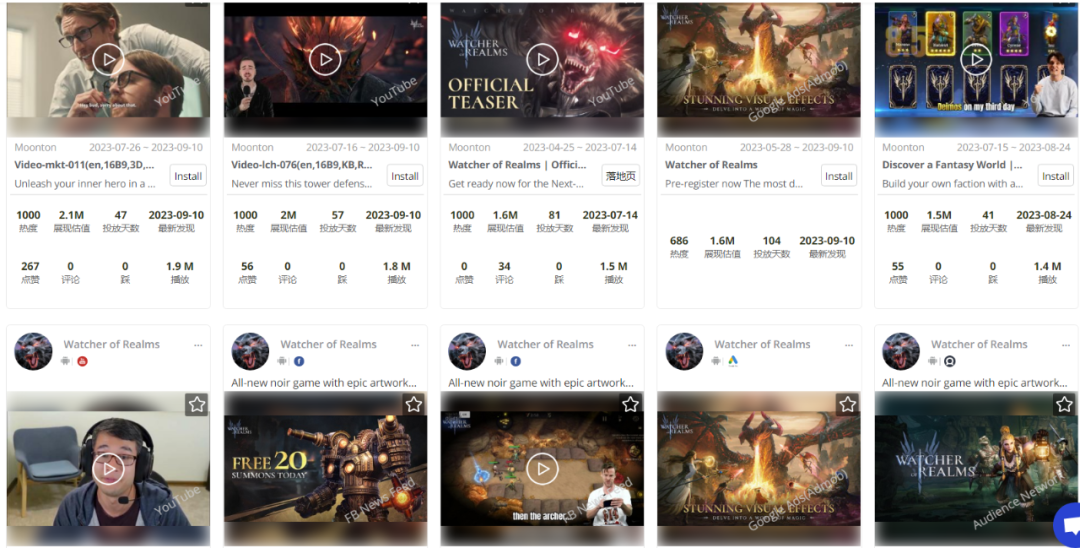
On the other hand, it specifically targeted the preferences of male players by showcasing a plethora of in-game female character-related content. It departed from the game's overall dark style and adopted a trendy magazine style, featuring backgrounds predominantly in shades of pink and blue.

Overall, from May to July, "Watcher of Realms" had a total ad campaign duration of over 60 days, covering the entire pre-registration period. After the official launch of the product on July 12th, "Watcher of Realms" significantly increased its ad spend in countries such as the United States and Canada. In particular, the ad spend in the United States was three times higher than in other regions. Additionally, "Watcher of Realms" had a noticeable ad presence in the Southeast Asian region, likely because Moonton, the developer behind "Mobile Legends: Bang Bang," has a large player base in Southeast Asia. Moonton likely aimed to consolidate its influence in Southeast Asia with "Watcher of Realms" and explore the potential for such products in the region.
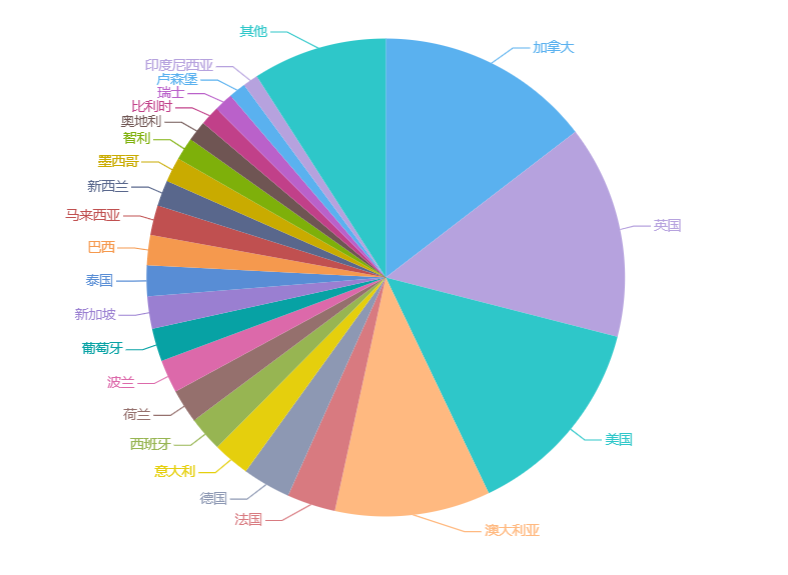
Based on the current performance of "Watcher of Realms" in app store rankings, it may not be considered particularly outstanding, but its rankings and revenue are showing an overall upward trend. Especially in countries like Singapore, Zimbabwe, and Belarus, its rankings have improved from outside the top 100 to within the top 50 in just a few days. From this perspective, there may be expectations for the future performance of "Watcher of Realms" in the coming period.

In conclusion
Looking at the global gaming landscape, it's evident that Team RPG games have seen a significant quality improvement in the past two years, with both domestic and international developers intensifying their efforts. "Next-generation" has become the starting point for Team RPG games, and some leading Western developers have even released games developed with the Unreal Engine 5 (e.g., "King Arthur: Legends Rise"). In contrast, Chinese developers are exploring breakthroughs in gameplay and art style differentiation, aiming to tap into the potential of Team RPG games in various regions globally. In this context, "Watcher of Realms" stands out with its aesthetics, storyline, and settings tailored to the tastes of Western players. This raises the question of how the game can appeal to markets beyond Europe and the Americas.
As mentioned earlier, "Watcher of Realms" has performed exceptionally well in Western markets. However, its performance in Southeast Asian markets like the Philippines and Singapore has been relatively modest, with cumulative downloads in the first week not surpassing 10,000. Clearly, "Watcher of Realms" still needs to find an effective strategy to address this issue, which is likely to be a key challenge for its expansion into other overseas regions.
Furthermore, it's worth noting that although Chinese developers have entered mainstream overseas markets with Team RPG products, the Team RPG genre in Western markets is still predominantly dominated by local companies like EA ("Star Wars: Galaxy of Heroes") and Scopely ("MARVEL Strike Force"). This implies that Chinese developers, including MuTong, need to not only navigate competition from various directions but also ensure that their own game mechanics have enduring appeal if they want to achieve stable and long-term success in Western markets.
However, it's too early to make definitive conclusions at this stage. Team RPG still offers significant opportunities for Chinese developers who hold the cards of aesthetics, marketing, evolution advantages, self-developed capabilities, and for Western developers who leverage local advantages and technological prowess. The competition surrounding Team RPG games is ongoing, and only time will tell who emerges as the winner.
·END·
文章作者:Sailing Global
版权申明:文章来源于Sailing Global。该文观点仅代表作者本人,扬帆出海平台仅提供信息存储空间服务,不代表扬帆出海官方立场。因本文所引起的纠纷和损失扬帆出海均不承担侵权行为的连带责任,如若转载请联系原文作者。 更多资讯关注扬帆出海官网:https://www.yfchuhai.com/

{{likeNum}}
好文章,需要你的鼓励
 已关注
已关注
 关注
关注

微信号:yfch24

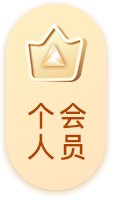

微信号:yfch24
小程序


公众号

社群















